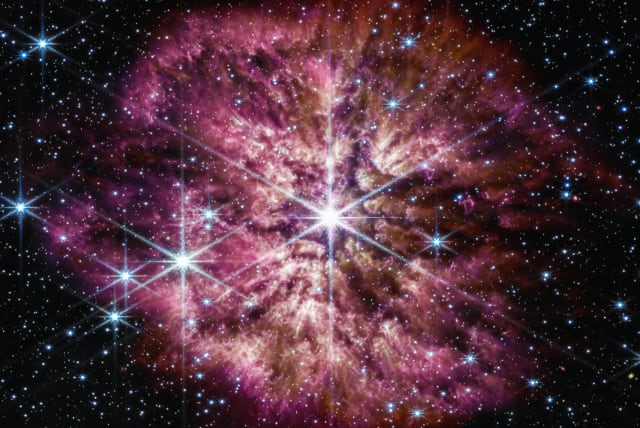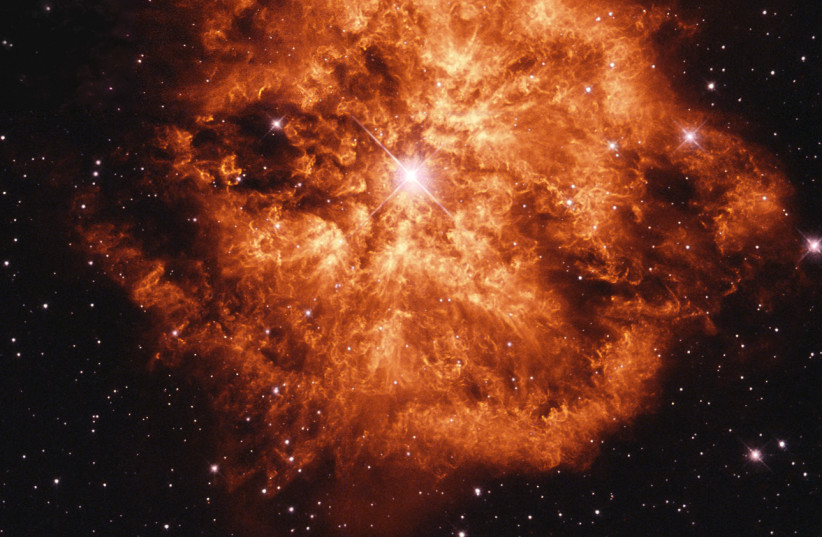NASA’s James Webb Telescope observes massive, rare pre-supernova star

The star, WR 124, is 15,000 lightyears away, located in the Sagitta constellation.
NASA's James Webb Telescope observed a Wolf-Rayet star - one of the most luminous, massive and briefly detectable stars known to astronomers - in June 2022, the US space agency announced on Tuesday.
The star, WR 124, is 15,000 lightyears away, located in the Sagitta constellation. It is 30 times the mass of the Sun and has shed 10 Sun's worth of its outer layers. Wolf-Rayet stars go through the process of shedding their outer layers, forming rings of dust and gas.
As the gas shed by the star moves away from it and in the process cools down, cosmic dust forms, glowing in the infrared light detected by the telescope.
Value of Wolf-Rayet phase observations to scientists
Only some massive stars experience a brief Wolf-Rayet phase before they become supernovae, making the observations highly valuable to astronomers.
Astronomers are greatly interested in identifying the origin of cosmic dust that can survive a supernova blast. This is because dust is integral to the inner workings of the universe, sheltering forming stars, gathering together to form planets and serving as a medium for molecules - including the fundamental building blocks of life - to form and clump together. There is more dust in the universe than astronomers' theories on dust formation can explain.
The observations of WR 124 create new possibilities for studying details of cosmic dust, which can be observed under ideal conditions using the Webb Telescope's Near-Infrared Camera (NIRCam), which balances the brightness of the star's core and the details in the surrounding gas.
The telescope’s Mid-Infrared Instrument (MIRI) shows the clumpy structure of the gas and dust nebula of the ejected matter surrounding WR 124. Before the development of the James Webb Telescope, not enough detailed information was available to researchers seeking to understand dust production in environments similar to that of the star. Additionally, they did not know whether the dust particles were large enough or whether there was enough of them to survive the supernova. Using the telescope, however, astronomers are now seeking answers to these questions.
Stars such as WR 124 also help scientists understand an important period in the universe's early history. There were similar dying stars in the early universe with heavy elements in their cores. These elements are now common on Earth.
Jerusalem Post Store
`; document.getElementById("linkPremium").innerHTML = cont; var divWithLink = document.getElementById("premium-link"); if (divWithLink !== null && divWithLink !== 'undefined') { divWithLink.style.border = "solid 1px #cb0f3e"; divWithLink.style.textAlign = "center"; divWithLink.style.marginBottom = "15px"; divWithLink.style.marginTop = "15px"; divWithLink.style.width = "100%"; divWithLink.style.backgroundColor = "#122952"; divWithLink.style.color = "#ffffff"; divWithLink.style.lineHeight = "1.5"; } } (function (v, i) { });

